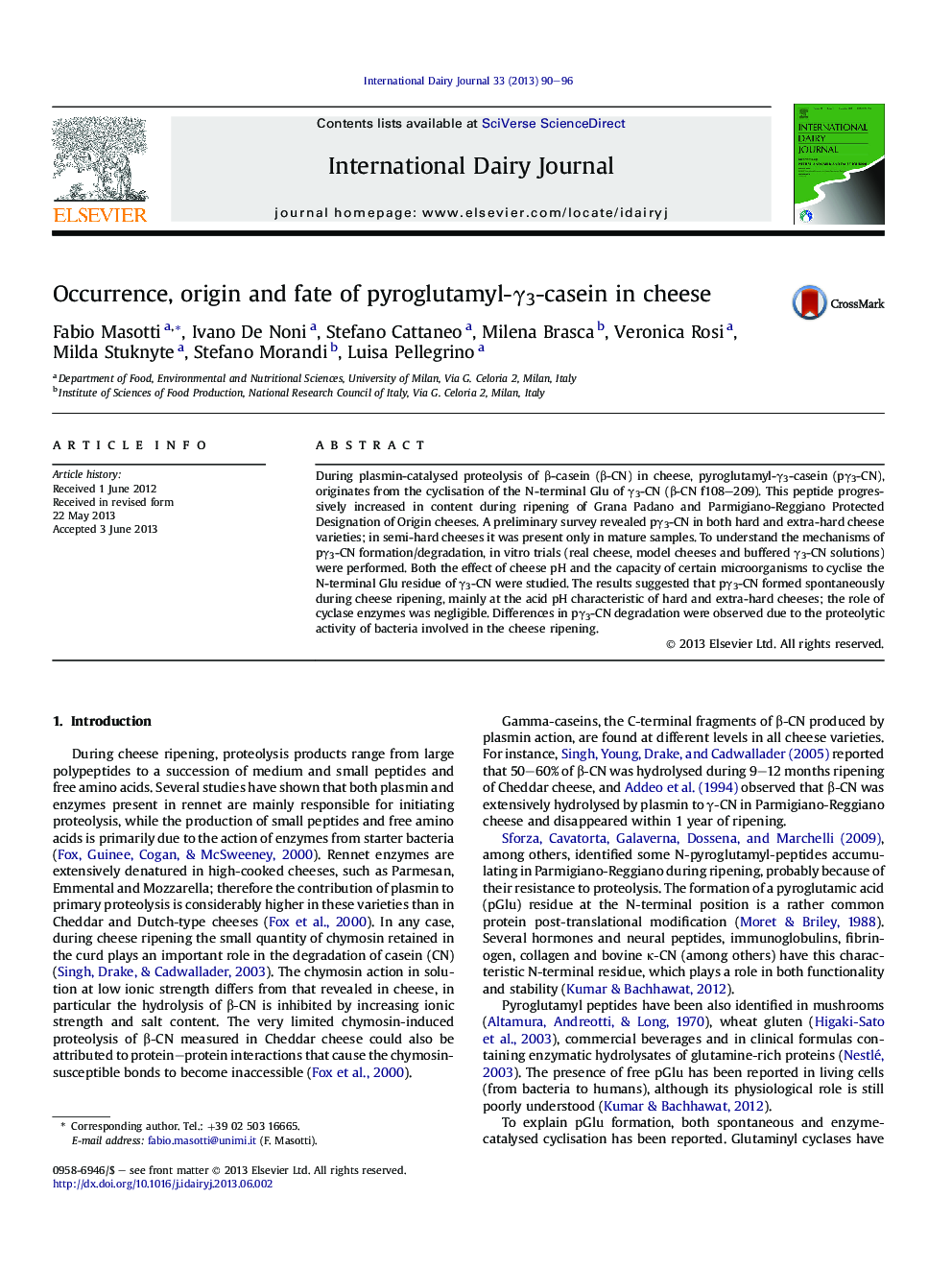| Article ID | Journal | Published Year | Pages | File Type |
|---|---|---|---|---|
| 2434454 | International Dairy Journal | 2013 | 7 Pages |
During plasmin-catalysed proteolysis of β-casein (β-CN) in cheese, pyroglutamyl-γ3-casein (pγ3-CN), originates from the cyclisation of the N-terminal Glu of γ3-CN (β-CN f108–209). This peptide progressively increased in content during ripening of Grana Padano and Parmigiano-Reggiano Protected Designation of Origin cheeses. A preliminary survey revealed pγ3-CN in both hard and extra-hard cheese varieties; in semi-hard cheeses it was present only in mature samples. To understand the mechanisms of pγ3-CN formation/degradation, in vitro trials (real cheese, model cheeses and buffered γ3-CN solutions) were performed. Both the effect of cheese pH and the capacity of certain microorganisms to cyclise the N-terminal Glu residue of γ3-CN were studied. The results suggested that pγ3-CN formed spontaneously during cheese ripening, mainly at the acid pH characteristic of hard and extra-hard cheeses; the role of cyclase enzymes was negligible. Differences in pγ3-CN degradation were observed due to the proteolytic activity of bacteria involved in the cheese ripening.
